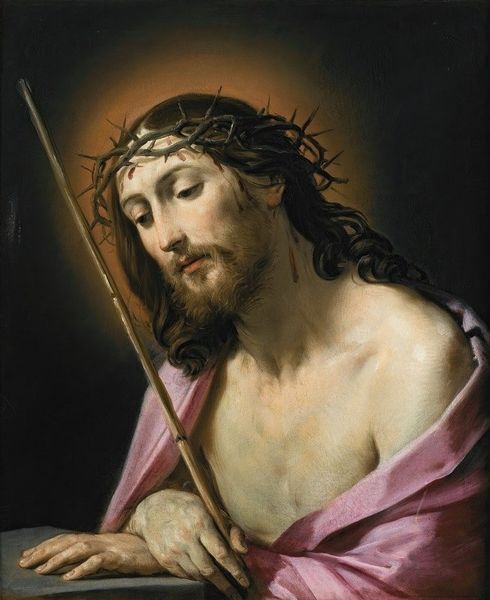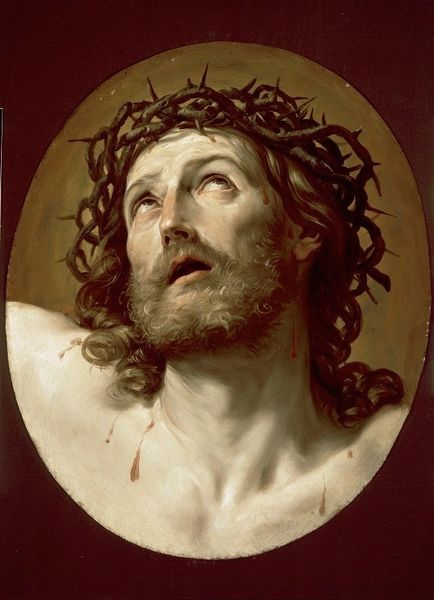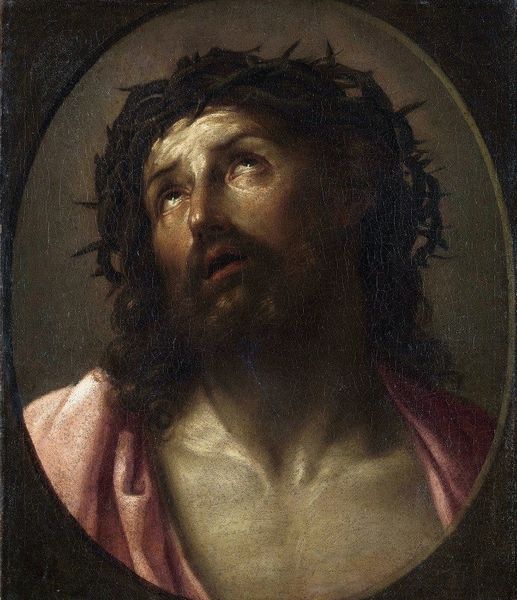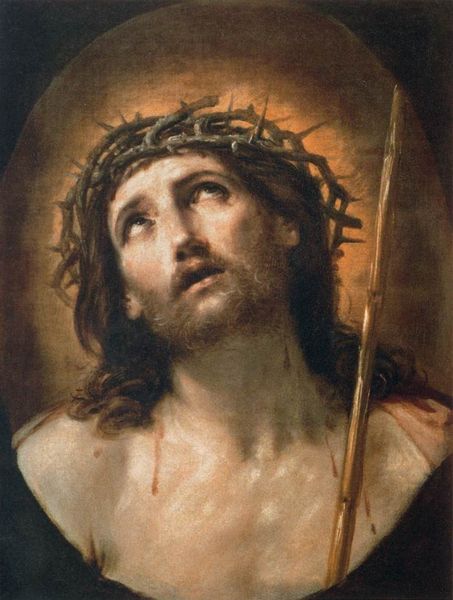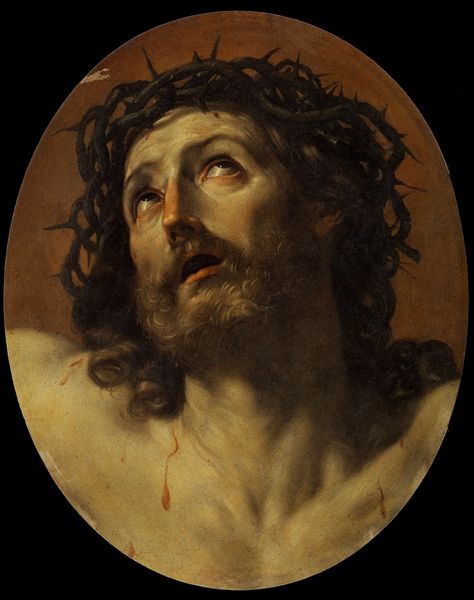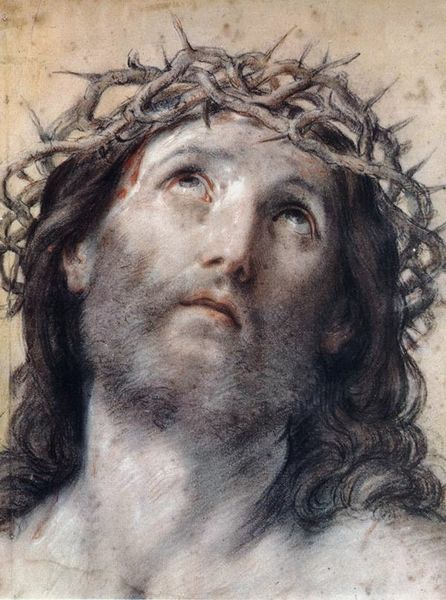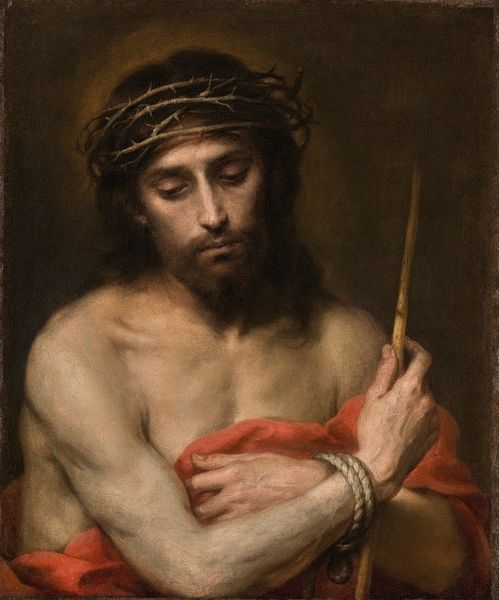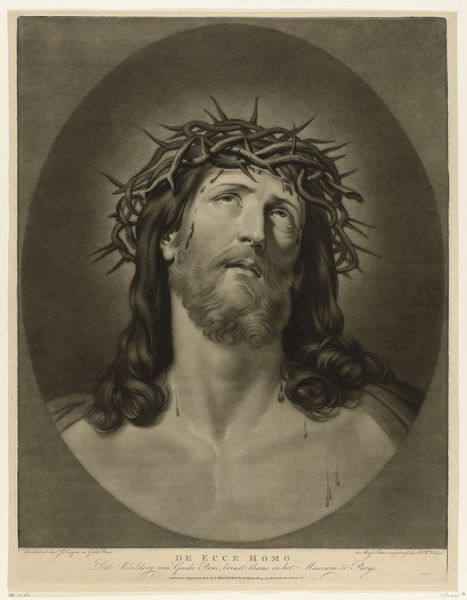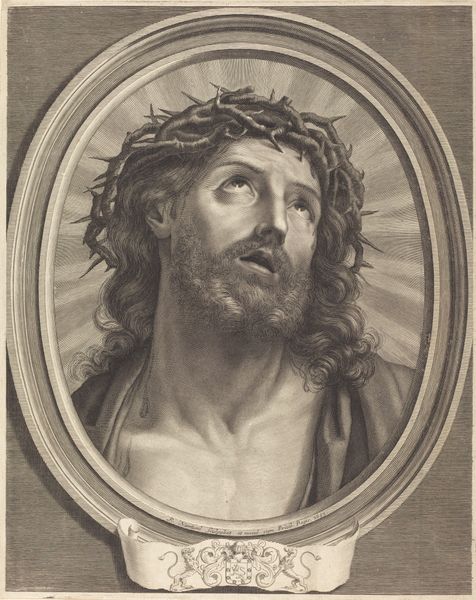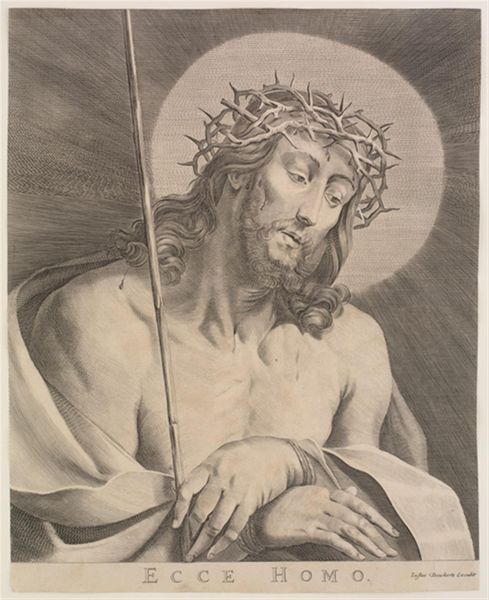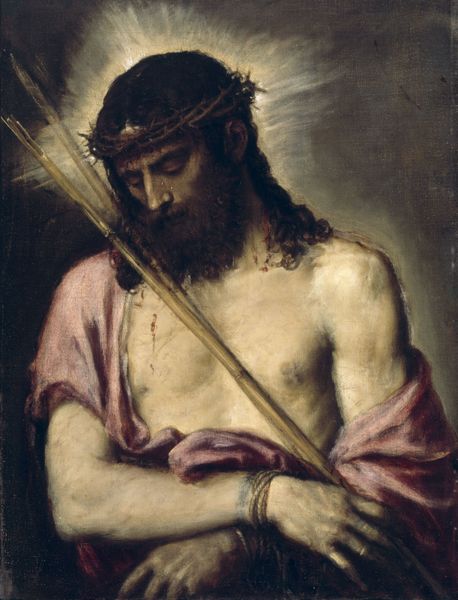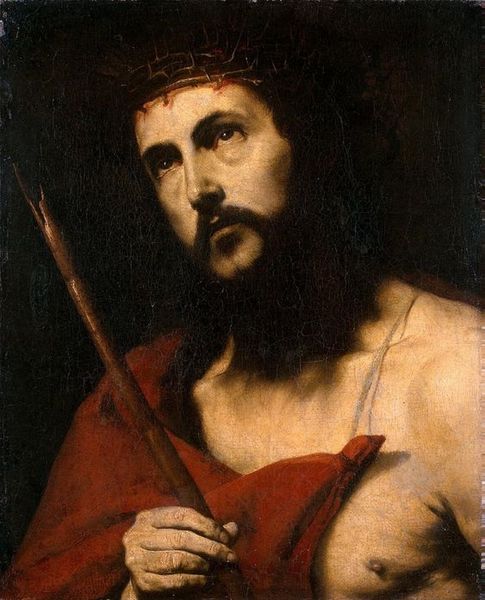
painting, oil-paint
#
portrait
#
baroque
#
portrait
#
painting
#
oil-paint
#
chiaroscuro
#
history-painting
#
italian-renaissance
Copyright: Public Domain: Artvee
Editor: We’re looking at “Ecce Homo,” attributed to Guido Reni. It’s an oil painting depicting Christ, crowned with thorns. The expression is just haunting, almost otherworldly. What stands out to you in terms of how this piece was made, and why? Curator: The materiality screams Baroque. Look at how Reni deploys oil paint; it’s about more than just representation, isn't it? Think about the pigment—where did those deep shadows come from, what labor went into mixing them? It wasn't just an artistic process, it was an economic and social one too. How do you see the production influencing the overall effect? Editor: Well, the stark contrast between the highlighted figure and the dark background creates an almost theatrical mood. Was that common for paintings intended for religious settings? Curator: Exactly! But let's push beyond the surface. The intense contrast—chiaroscuro—serves a dual purpose. Art historians often consider the way this illuminates the subject; but from a materialist lens, we see how such staging impacts reception. The light captures the beholder, demanding their gaze. What do you notice about the way Christ is rendered here? Editor: He looks so… vulnerable. And the crown seems almost crudely made. The artist probably spent a lot of time on it but, it adds a level of raw brutality to the divine suffering. Curator: Precisely. Reni's handling of those thorns hints at broader societal anxieties. Religious art was both a reflection of, and a vehicle for, social ideology. Thinking about its material components and its labour process shifts it from something purely devotional to something actively engaging with class, belief, and control. Editor: So it's not just about faith, but also about how that faith was constructed and consumed. That changes how I see it. Curator: Indeed. Looking closer reveals how art creation is deeply rooted in power and production, it challenges ideas on what and who creates our artistic culture.
Comments
No comments
Be the first to comment and join the conversation on the ultimate creative platform.
